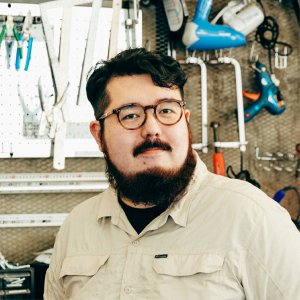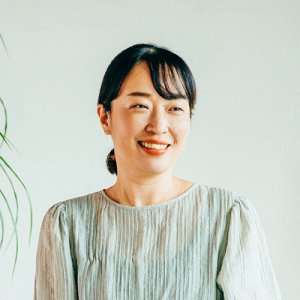
Academic Program Design for the State University of New York
for learning traditional techniques and technologies
while staying in Hida City, Gifu Prefecture in Japan
Outline
An “academic program” based in Tokyo and Hida for students to experience fabrication and traditional techniques
The School of Architecture and Planning at the University at Buffalo, the State University of New York has an annual study abroad program for learning while experiencing a foreign culture. Both undergraduate and graduate students participate to travel around Japan over nine weeks, research Japanese architecture and cities, and are given credits after completion.
For this study abroad program, FabCafe Tokyo and FabCafe Hida, operated by Loftwork, provided a base in Tokyo and was in charge of planning and operating its essential 5-day “Hida workshop program.”
Summary
- Support content
Office sharing at FabCafe MTRL
Provided the co-working space of FabCafe MTRL as a research base during the stay in Japan (9 weeks)
Program design/direction
Assignment planning/design
Assistance for conducting the assignment: “creating a new wood joinery method”
Design and implementation of a 5-day stay program based in Hida-Furukawa
Design and implementation of a tour for learning traditional woodworking techniques and the woodworking industry
Design and implementation of a woodwork session with craftspeople of Hida
Tool development utilizing 3D modeling technology
Tool development for creating joints
- Project period
June-July, 2018
- Setup
Client: Clinical Assistant Professor Nick Bruscia of School of Architecture and Planning, University at Buffalo, the State University of New York
Project management, program direction: FabCafe Tokyo Daiki Kanaoka
Hida Kagawa Program Direction:FabCafe Hida Yuko Ito
Communication support:Loftwork Mariko Suzuki
Fab Production support:FabCafe Hida Hideaki Asaoka, Takahiro Kai(studio archē)
Technical Development:Junichiro Horikawa(Orange Jellies)
Background
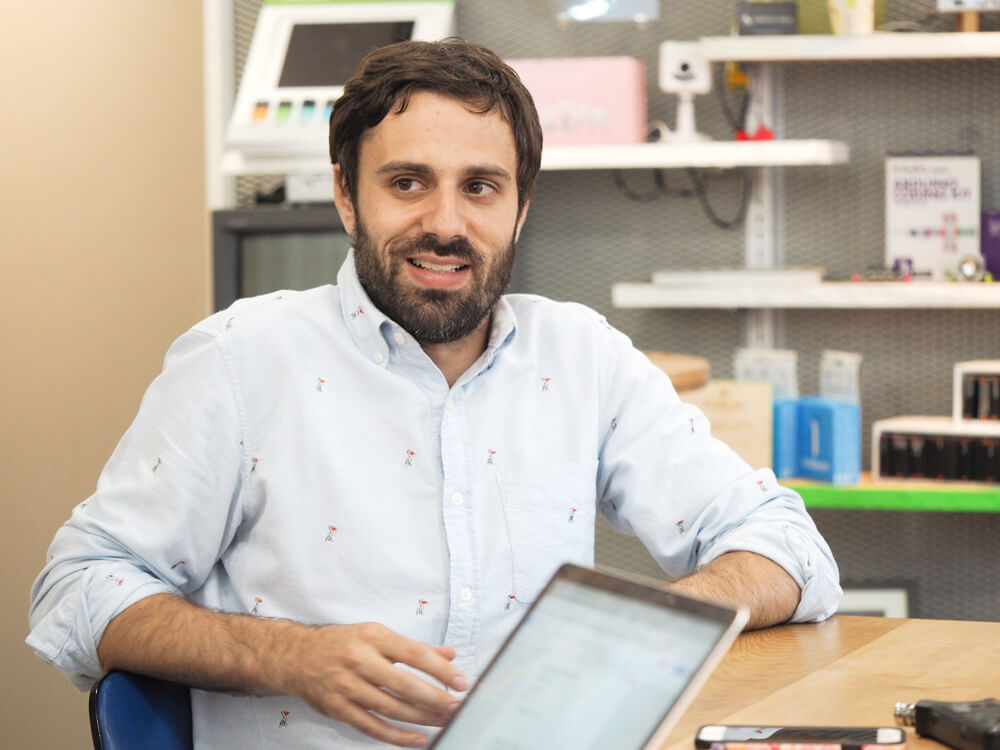
Assistant Professor Nick Bruscia, who studied architecture in Japan as a student, was in charge of the study abroad program. He had held workshops on architecture in collaboration with Loftwork’s digital fabrication café, FabCafe Tokyo. In the previous year, he also visited FabCafe Hida in Hida City, Gifu Prefecture with its abundant hardwood forests, and observed the traditional wood-joinery techniques of the craftspeople.
For this program, he requested a revisit to Hida-Furukawa, where he went the previous year, to learn the traditional wood-joinery techniques from the craftspeople, and that the students would also have a chance to learn through digital fabrication and wood-joinery projects. Assistant Professor Bruscia suggested that the learning process be jointly created from scratch with the FabCafe team.
Program Details
Provision of a research base (FabCafe MTRL in Shibuya, Tokyo)
As a research base for the 9-week stay in Japan, the twelve undergraduate and graduate students used the FabCafe MTRL co-working space in Shibuya, Tokyo. They conducted Japanese architectural research and urban research of Tokyo, through joint workshops with other universities and a 7-day travel week, visiting Kyoto, Hiroshima, etc.

Program design/direction (FabCafe MTRL in Shibuya, Tokyo)
For the FabCafe Hida workshop, Loftwork and Assistant Professor Bruscia designed an assignment for students, after examining what would be desirable for students to learn, and what assignment could maximize their learning.
We decided on an assignment to “design a new wood joinery method.”。
The goal was for the students to explore new possibilities of the traditional techniques, and discover new ways for utilizing advanced technologies by combining traditional Japanese woodworking techniques of “wood joinery” with a new design process using 3D modeling.

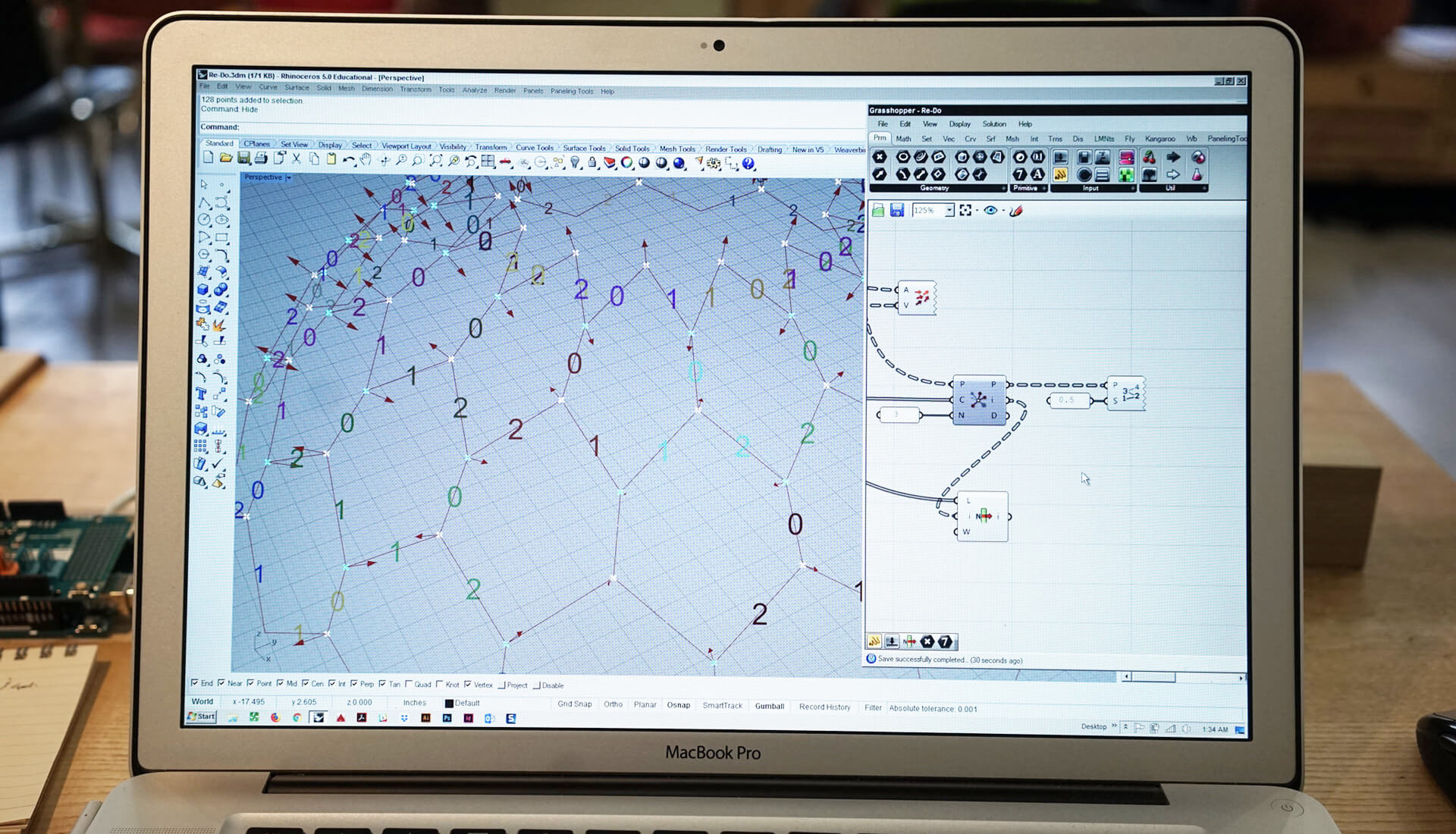
Tool development utilizing 3D modeling technology (FabCafe MTRL in Shibuya and FabCafe Hida in Hida City)
Assistant Professor Bruscia desired to make a jig using 3D modeling technology and a sensor, for the students to utilize in creating their new wood joinery design.
Architectural programmer and designer, Junichiro Horikawa, participated as a technical support member and developed a jig that utilized a sensor. The tool was designed to process realizable wood joinery data developed in 3D modelling by using a sensor, even with complicated three-dimensional angles.
An affordable, user-friendly, and flexible design was sought, in which the jig can be used as an attachment for common band saws, instead of requiring robot arms, complicated machine tools, and advanced operation technologies.
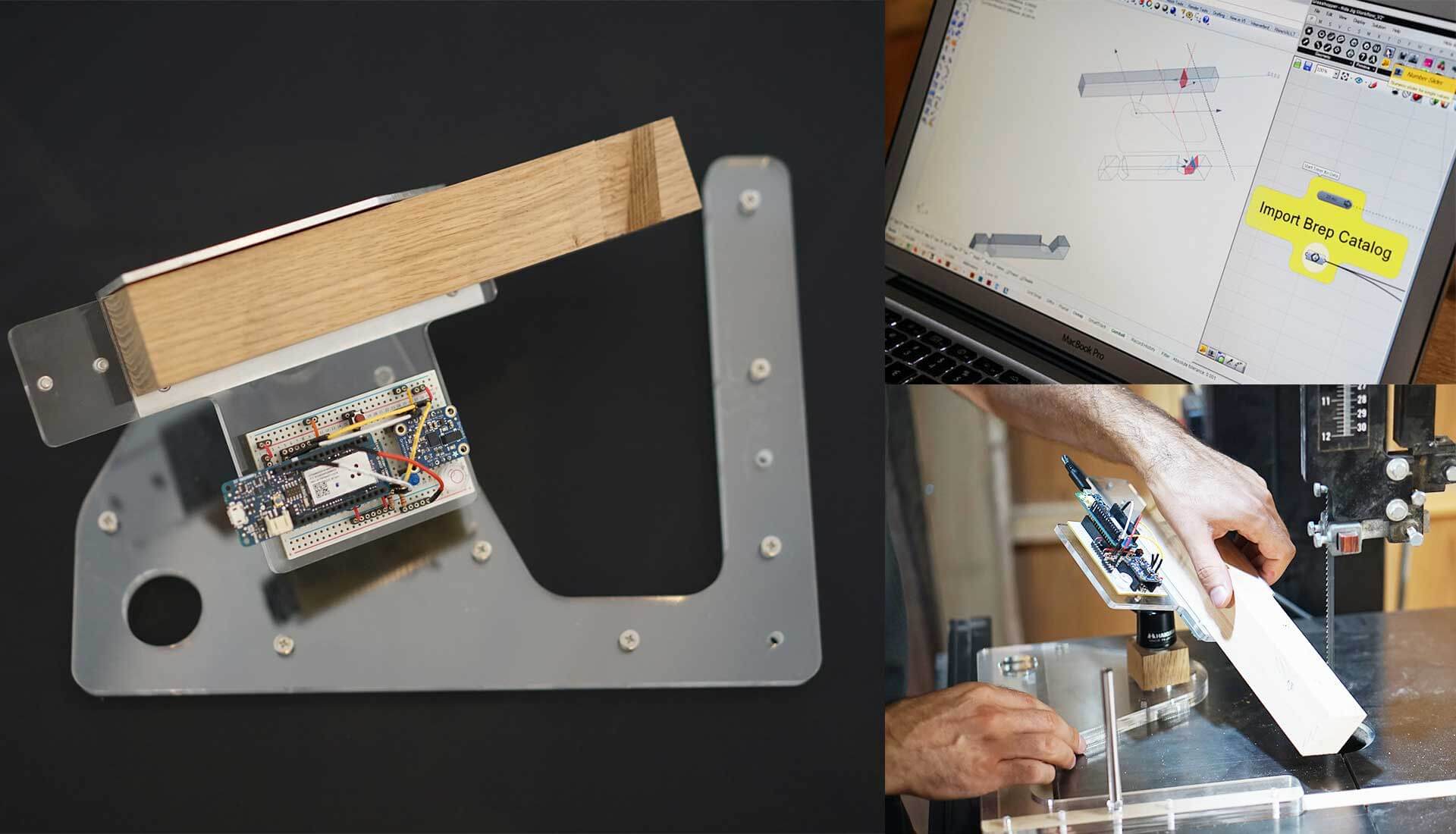
Design a session for learning the techniques of craftspeople in Hida, and becoming acquainted with the woodworking industry in Hida (FabCafe Hida in Hida City)
One of the goals of the Hida workshop was to learn traditional techniques from craftspeople of Hida and to gain firsthand experience of what the woodworking industry in Hida is like. With cooperation from craftspeople in Hida-Furukawa, the FabCafe Hida team planned a wood-joinery work demonstration and a workshop for learning how to use woodworking tools. The students also visited local businesses associated with the woodworking industry, and had a field trip to buildings and townscapes in Hida-Furukawa.




Assistance for woodworking (FabCafe Hida in Hida City)
One week prior to their stay in Hida, the students were divided into three teams and had been working on new wood joinery designs, using 3D modeling. In FabCafe Hida, the designs were actually produced by woodworking machines on site. The FabCafe Hida team assisted operating the woodworking machines.
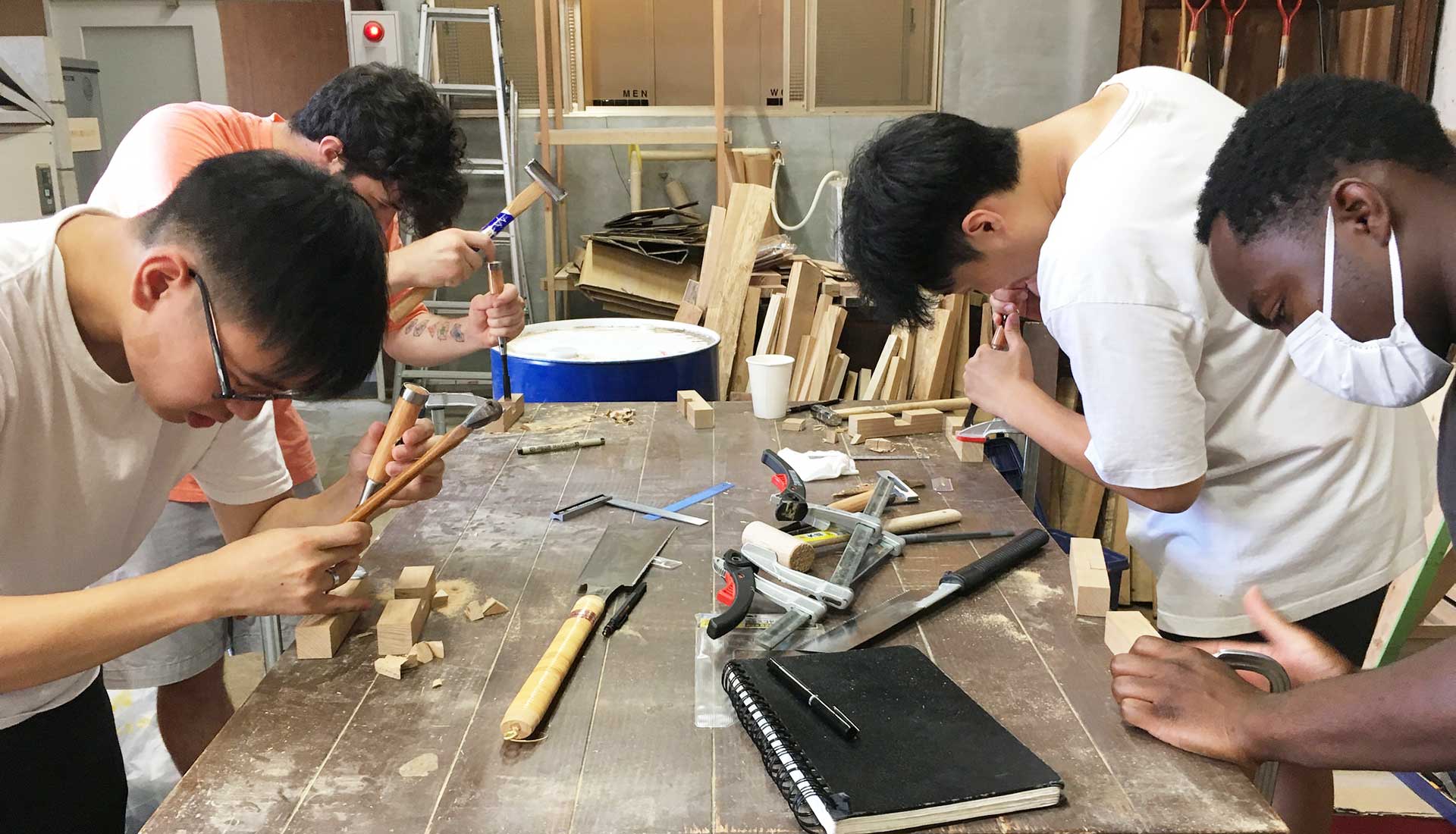

A debriefing session was held on the last day with the craftspeople involved in the program. A craftsman who is well-versed in tradition also participated in the session. Participants discussed the wood joineries made with flexible ideas, utilizing the 3D modeling technology.


Accommodations in Hida (FabCafe Hida in Hida City)
The students stayed at FabCafe Hida, a renovated old Japanese-style house and former sake brewery, built in the Edo period. “Studying architecture doesn’t mean looking at buildings, rather, it is knowing the culture of local residents and its context. So, it was great that we could spend our time as if we lived there, instead of just visiting.” (Assistant Professor Bruscia)


Member
Next Contents




